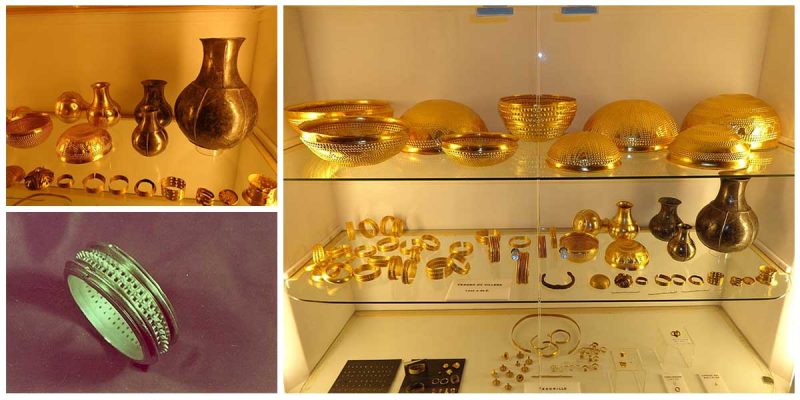The Villena’s Treasure is the second most important treasure found in Europe, the other being the Royal Graves in Mycenae, Greece.
The hoard was found on the Iberian Peninsula in December 1963 by the Spanish archaeologist José María García Soler in the sands of a dry riverbed called the “Rambla del Panadero”, 5 km from Villena. Since then, it has become the most successful exhibit in Villena’s Archaeological Museum.
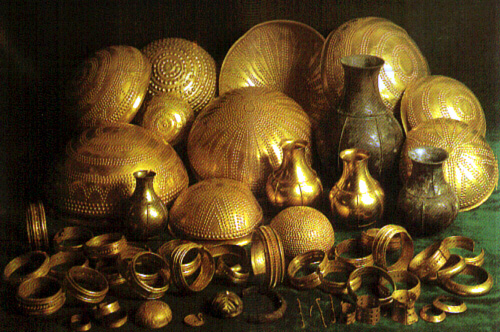
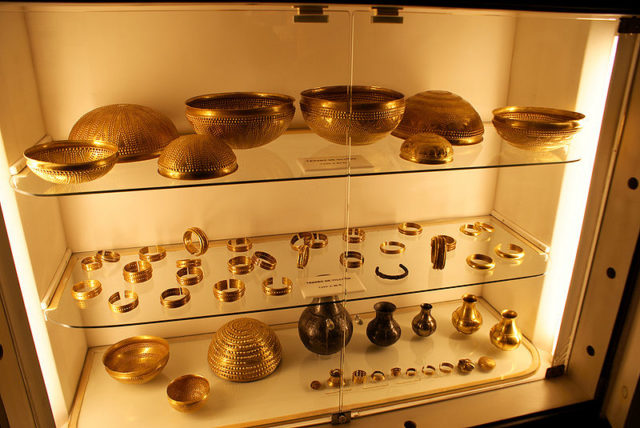
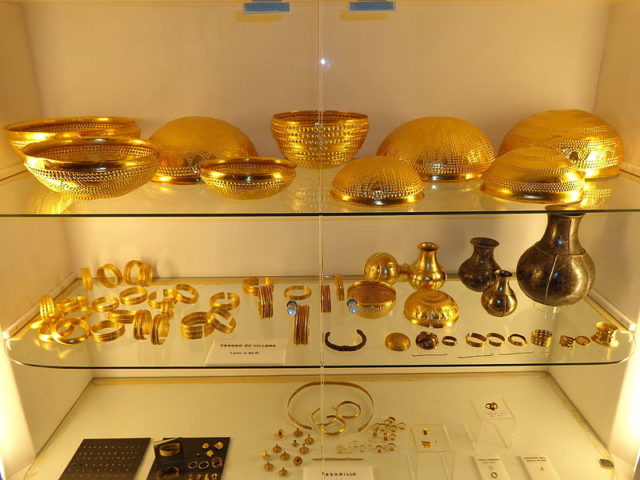
It comprised of a set of 59 objects made of gold, silver, iron and amber which included 11 bowls, 28 bracelets, 3 bottles and other small pieces (total weight equal to 9,754 kg).
Its discovery was published in most of the Spanish media but also in France, Germany and the United States of America.
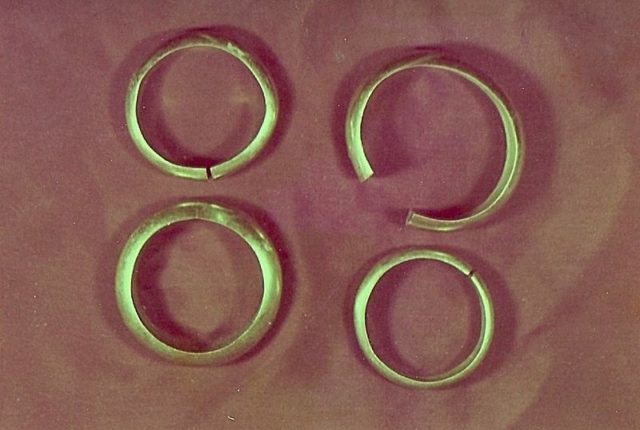
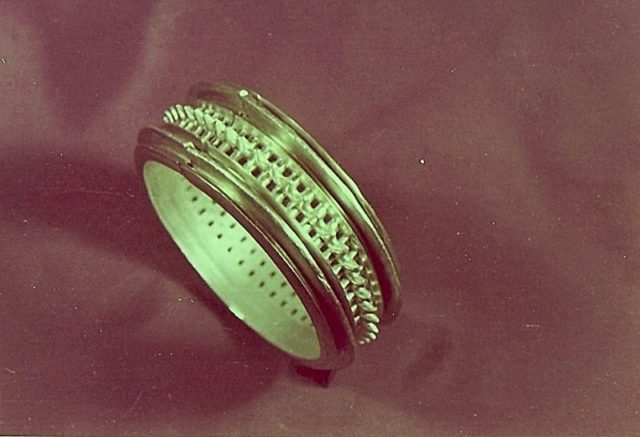
The eleven golden bowls, one egg-shaped and the other ones hemispherical, were made out of a thin sheet of gold leaf with no signs of welding. The archaeologists estimated that the contents of the hoard date to around 1000 BCE.
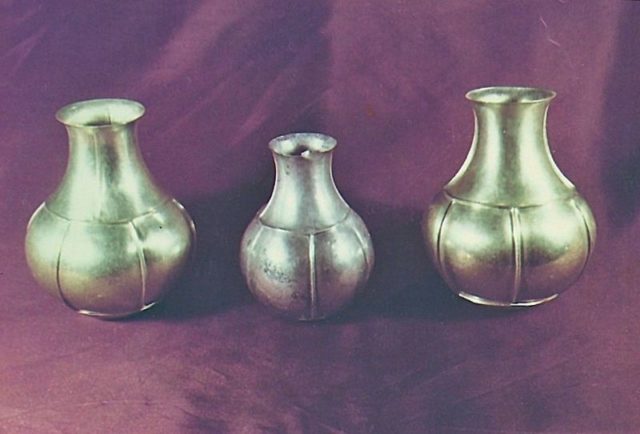
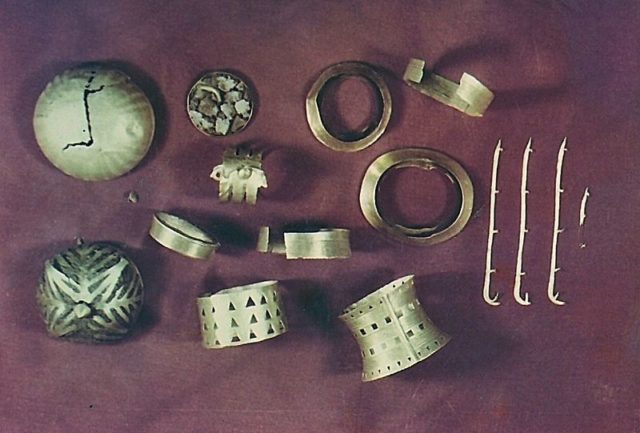
There is apparently no information about where the pieces come from, how they ended up in Villena or who made them, so the meaning of the Villena’s Treasure has been the object of intense debate since its finding.
There have been speculations, but there is no set answer.
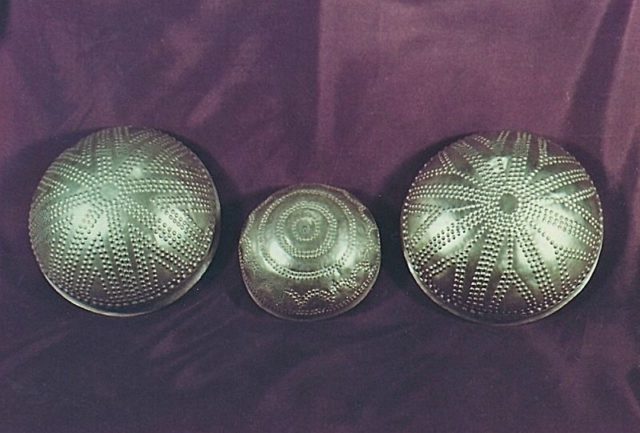
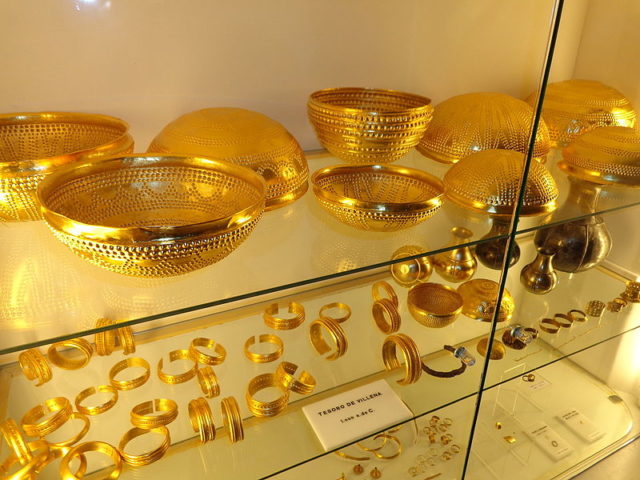
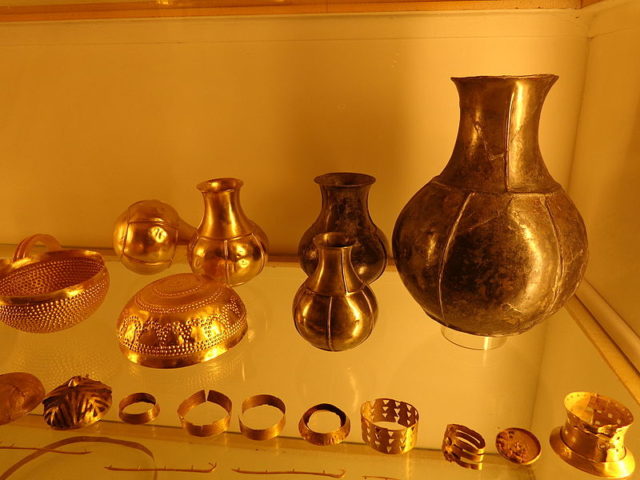
The treasure has been displayed at various exhibitions in different places such as Madrid, Alicante, Tokyo, and Kyoto and now there are two sets of copies of the entire treasure to be shown in exhibitions while the originals are permanently conserved in an armored showcase at Villena’s Archaeological Museum.
